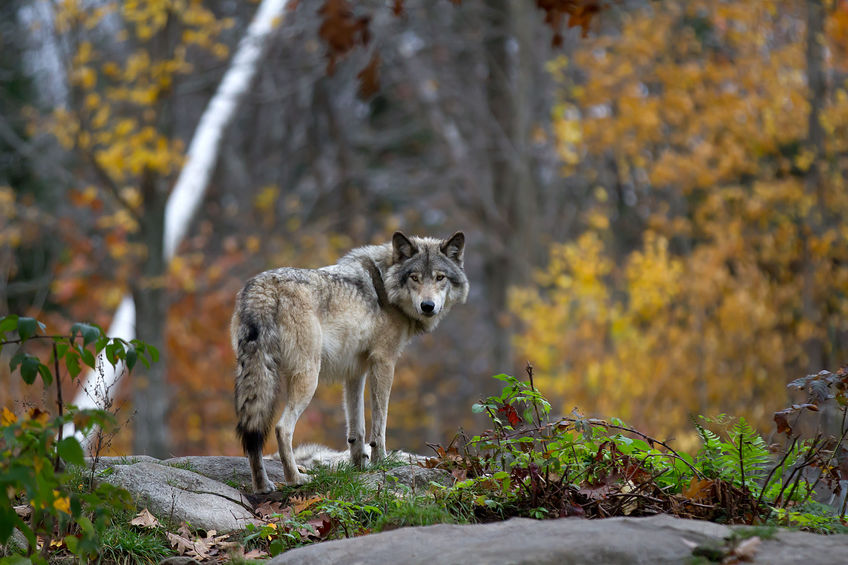The proposal by the U.S. Fish & Wildlife Service (FWS) last year to remove the grey wolf, or simply wolf (Canis lupus), from the Endangered Species List has encountered fierce resistance from environmental groups who insist that the apex predator still warrants protection under the federal Endangered Species Act (ESA).
FWS, a division of the Interior Department, is expected to issue a final rule in the coming months declaring the wolf recovered in the Lower 48, a step that would remove its protections under the ESA. Since the wolf was reintroduced in Idaho, Montana, and Wyoming in 1995, its numbers there and elsewhere in the U.S. have soared. According to FWS estimates, there are currently 6,000 wolves in the Lower 48. (There are another 8,000 – 11,000 in Alaska, but Alaskan wolves were never placed on the Endangered Species List.)
Widespread Recovery
In addition to the three states where wolves were reintroduced, wolf packs have also been identified in recent years in parts of California, Washington, Oregon, Nevada, Utah, North Dakota, South Dakota, Minnesota, Michigan, Wisconsin, Illinois, Kansas, Nebraska, Missouri, and Indiana. The largest concentration of wolves can be found in the Great Lakes states of Minnesota, Michigan, and Wisconsin, where their number are put at 4,400.
Despite the wolf’s rebound, environmental groups are threatening to take FWS to court over the delisting. When the delisting was first proposed last year, Collette Adkins, the Center for Biological Diversity’s (CBD) carnivore conservation director, said the move would be “a death sentence for grey wolves across the country.”
With lawsuits looming, the Washington Times (March 3) reports that some lawmakers want to avoid a protracted court fight by passing a bill delisting the wolf. The Times notes that the grey wolf was delisted in the Northern Rockies in 2011, but that was accomplished through a rider added to a must-pass budget bill in the Senate. The rider contained language saying the delisting “shall not be subject to judicial review.”
Identical language, barring court challenges, can be found is a bill co-sponsored by Rep. Collin Peterson (D-Minn.) and Rob Bishop (R-Utah) that would extend the delisting nationwide.
“Grey wolf populations have reached sustainable levels, and it is well past time to return authority over their management to the states,” Peterson said in a statement. “This bipartisan legislation will allow states to protect the livelihood of their livestock owners and preserve a health balance of wild animal populations.”
Peterson’s predominantly rural northwestern Minnesota district has experienced a surge in grey wolf populations, accompanied with growing attacks by the predators on livestock. The problem is widespread, but there is little farmers and ranchers can do to protect their livestock as long as the wolf enjoys the protection of the ESA.
“It’s time to allow farmers and ranchers to lawfully defend their livestock against predatory animals,” Roger Johnson, president of the National Farmers Union, said in a statement.
In the United States, wolves typically dine on moose, deer, elk, beaver, bighorn sheep, and mountain goats, though not all these preys are available everywhere. But cattle, sheep, pigs, and other livestock can easily find themselves on the menu of a nearby wolfpack.
CBD and other environmental groups oppose steps that would return management of wolves to the states, arguing the predators could be subjected to hunting to cull their populations. Yet, as the Trump FWS points out, that under the ESA, the agency’s task is recovery, and no more.
Prevent Extinction and Recover
“The ESA is not designed to permanently protect individual animals from hunting or other active management,” the agency said in its proposed delisting Q&A. “The purpose of the ESA is to prevent extinction of Imperiled species and to recover them. Once the threshold of recovery has been met, we can – and must – return the management to state and tribal wildlife agencies.”
